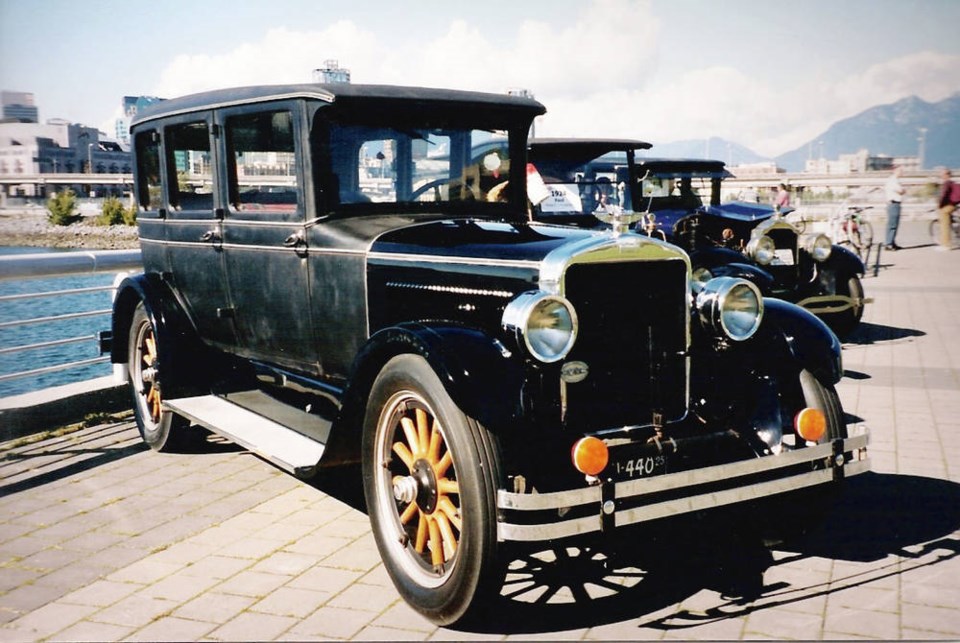By the 1920s the era of the steam-powered automobile was just about over. The White Co. of Cleveland, Ohio had given up on steam in 1911 to concentrate on gasoline engines. Doble was floundering in spite of its advanced technology, and Stanley of Newton, Massachusetts, the largest steam car maker in the United States would be pretty well finished by 1925.
This didn’t deter Oland J. Brooks, a personable and persuasive Buffalo, N.Y. promoter from plunging into the steam car business in 1923. Subsequent events would suggest, however, that he was more likely interested in building his personal fortune than in building cars. It became an interesting tale of deception.
Brooks got things rolling in 1920 by establishing Banking Services Corp, in Toronto, a finance company dealing in second mortgages. He went on to establish Brooks Steam Motors Ltd., in 1923, and obtained a plant in an eager Stratford, Ontario on very favourable terms in which the town assumed a $50,000 mortgage on a $55,000 building. The plant was refitted for car production.
Stratford was a wise choice. It was a major steam maintenance hub and Grand Trunk Railway happened to be laying off steam mechanics at that time, making skilled workers available.
The Brooks car was strongly influenced by the Stanley steamer, although as noted, Stanley was in financial difficulty. The kerosene-fired vertical cylindrical wire-wound boiler was located under the hood that was fitted to make the Brooks resemble a gasoline car.
The two cylinder steam engine rested horizontally under the floor just ahead of the rear axle. Each piston produced two power strokes per crankshaft revolution, providing power impulses equivalent to a four-stroke, eight cylinder internal combustion engine.
Sedans only were produced, and an unusual feature of the body was its cladding. Rather than traditional steel or aluminum, the wood-framed structure was covered with a heavy leather-like material called Meritas.
In appearance and fittings the Brooks was hardly distinguishable for a typical gasoline car. Bodies were built for Brooks by American Auto Trimming Co. of Walkerville, Ontario.
The difference from gasoline cars was in operation. To start the Brooks the driver had valves to operate, gauges to watch, a pilot light to pamper; it was complicated and slow to fire up. Once under way, however, driving was an easy, one-lever process with no transmission to shift.
But the performance had limitations. Its small boiler could maintain only a 56 km/h (35 mph) cruising speed, although it was faster in short bursts. All in all the disadvantages were more than most motorists were prepared to tolerate. Competing gasoline-powered luxury cars — the Brooks was in the Cadillac price range — were simpler to start and could easily cruise continuously at 80 km/h (50 mph) or more.
Production of the “Gentle Giant of Motion” as Brooks called it began in late 1924. It was heavily promoted across Canada to gain public familiarity, and more particularly, to sell company stock. These shares, not surprisingly, were sold by Oland Brooks’s Brooks Securities Ltd., in Toronto. To showcase his cars, Brooks even established taxi companies in Stratford and Toronto using Brooks steamers.
Things soon started going wrong. According to a research paper on Brooks by Brian Reynolds of Carlton University in Ottawa, “The company lied to shareholders about sales figures. In a letter to them in 1925, it claimed the factory was working day and night in an endeavour to catch up with orders received.”
“By 1926,” Reynolds wrote “the commercial failure of the cars was painfully obvious. The financial statement for 1926 revealed that the company sold no more than 18 cars in the entire year.”
Negative press reports and the lack of dividends soon led to investor unrest. In the spring of 1927 shareholders were alarmed to learn that $50,000 of their money was in a Buffalo bank, reportedlyto develop a Buffalo company called Brooks Steam Motors, Inc.
Apprehension intensified when Oland Brooks refused to allow a shareholder-appointed auditor to review company books, saying he would use an auditor of his choice.
In an attempt to control the promoter, a shareholders’ committee was formed, but it was too late. A last-ditch effort was made to save the company by developing a steam-powered bus but that too failed.
Receivership came for Brooks Steam Motors Ltd., in 1929. It would take several years to unravel all of the legal convolutions.
While briefly second to the Stanley in steam-car popularity, according to Hugh Durnford and Glenn Baechler’s book “Cars of Canada” only some 180 Brooks steamers were produced.
Oland Brooks had fled back to Buffalo, the only apparent financial beneficiary of the star-crossed venture. Approximately 8,000 shareholders lost virtually all of their estimated $4-million investment, and the Brooks chapter in Canadian steam car history closed.



